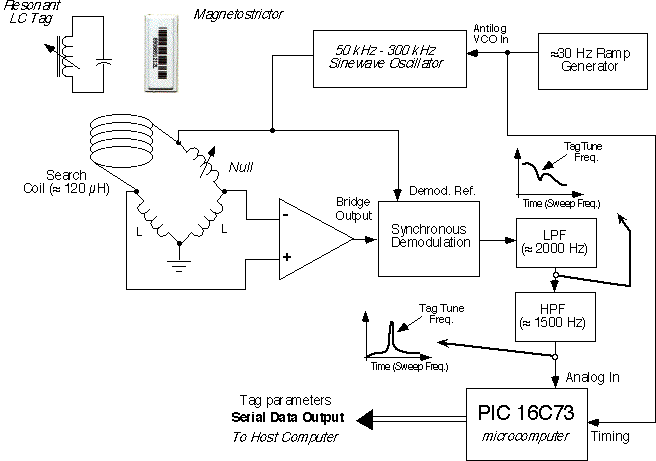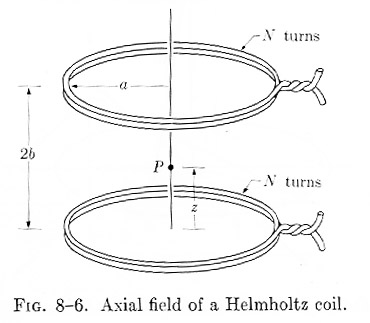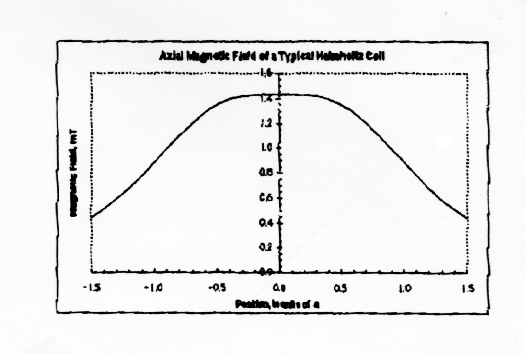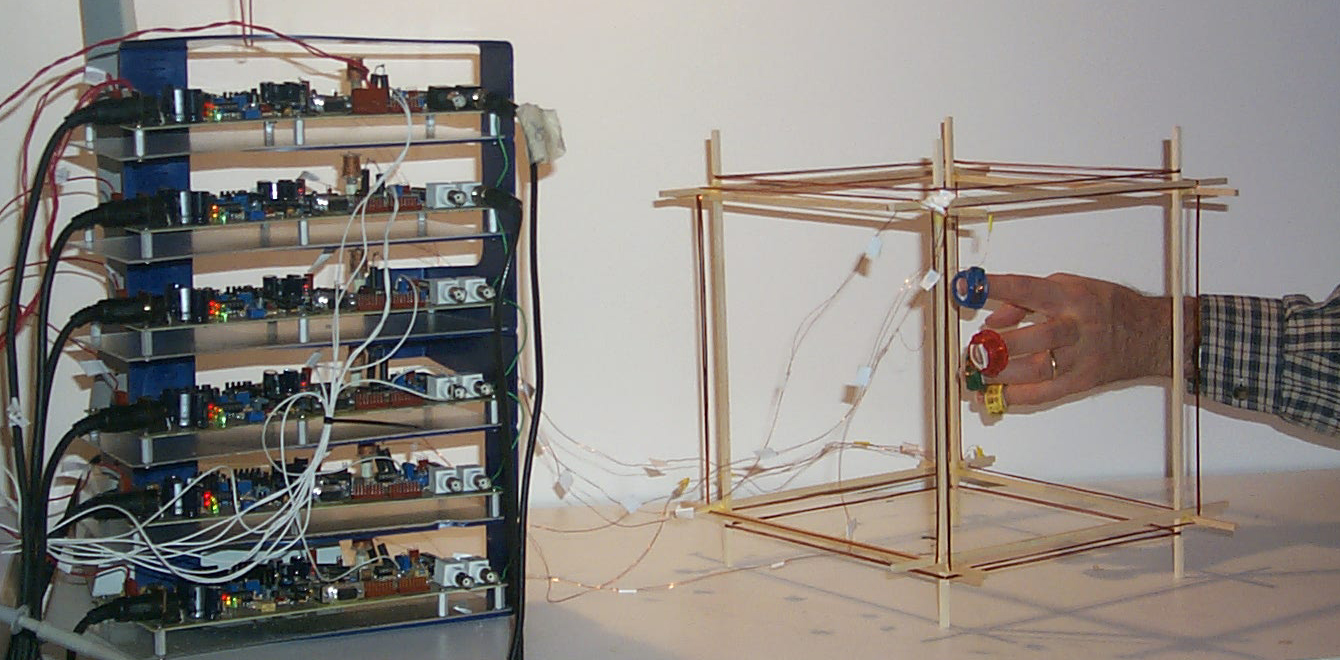Volumetric Tag Tracking
Kai-yuh Hsiao (under Joe Paradiso)

A Swept-Frequency Tag Reader
- Detects proximity of magnetically resonant tagged objects in field.
- Sweeps through 60kHz - 300kHz frequency band at 30 Hz.
- Detects all magnetic tags resonating within sweep frequencies with each sweep.
- Enables real-time CHI interaction (faster than multi-chip RFID) with simple physical objects.
- Motivation: wanted faster tag tracking response, willing to sacrifice detect range.
- Inexpensive reader electronics and simple, easily-crafted tag structure permit quick adaptation to CHI, sensing projects.

How it works
- Uses dynamic imbalance of inductor bridge to detect response from resonant tags.
- Sweeps continuously through frequencies, transmits out through coil.
- Tags couple inductively to coil, imbalance bridge.
- Bridge imbalance is filtered, translated to simple voltage output in time (picture below).


Single-coil system
- Simplicity, safety, and tag structure very well suited to many applications.
- Tag resonant frequency can be made to vary with physical parameters (e.g., force, position, etc.).
- Limitations
- Field lines are somewhat oddly shaped.
- Only one measurement possible: detects proximity coupled with orientation.
- Multi-tag objects produce reasonable but limited results.
- Musical/graphical demo written, harmonic, melodic, graphical changes reflect tag presence.
Helmholtz arrangement

- Two parallel coils shape field lines, create better-behaved field.
- Tags between coils produce signal on each coil proportional to distance to coil.
- Tags between coils produce sum signal proportional to cosine of orientation angle.
- Still limited to one axis.


Plot of axial field vs. z


Multi-coil system
- Work in progress - Helmholtz-coil arrangement of six coils in cube
formation for full three-dimensional tracking.
- Powered by six normal tag reader boards hac^H^H^Hstacked together.
- Multiplexing of transmit and receive circuits allows sampling of each axis alternately.
Applications/Future Directions
- Improvements:
- Increased range (probably as far as 2 meters) - increase power, optimize frequencies/resonances.
- Multi-axis tags or bent tags to ensure no loss of tags when rotated out of axis.
- Fewer boards (most components on six boards currently unused).
- Mathematical fit algorithms needed to find precise locations.
- Controller interfaces:
- Musical controller - Multi-axis single-hand continuous parameter control.
- Computer interface - VR glove, simple, wireless, batteryless.
- Tabletop/countertop interfaces.
- Original motivation: Tumor tracking for radiation therapy. (proof of concept)
updated 2000/04/26 by khsiao@mit.edu



